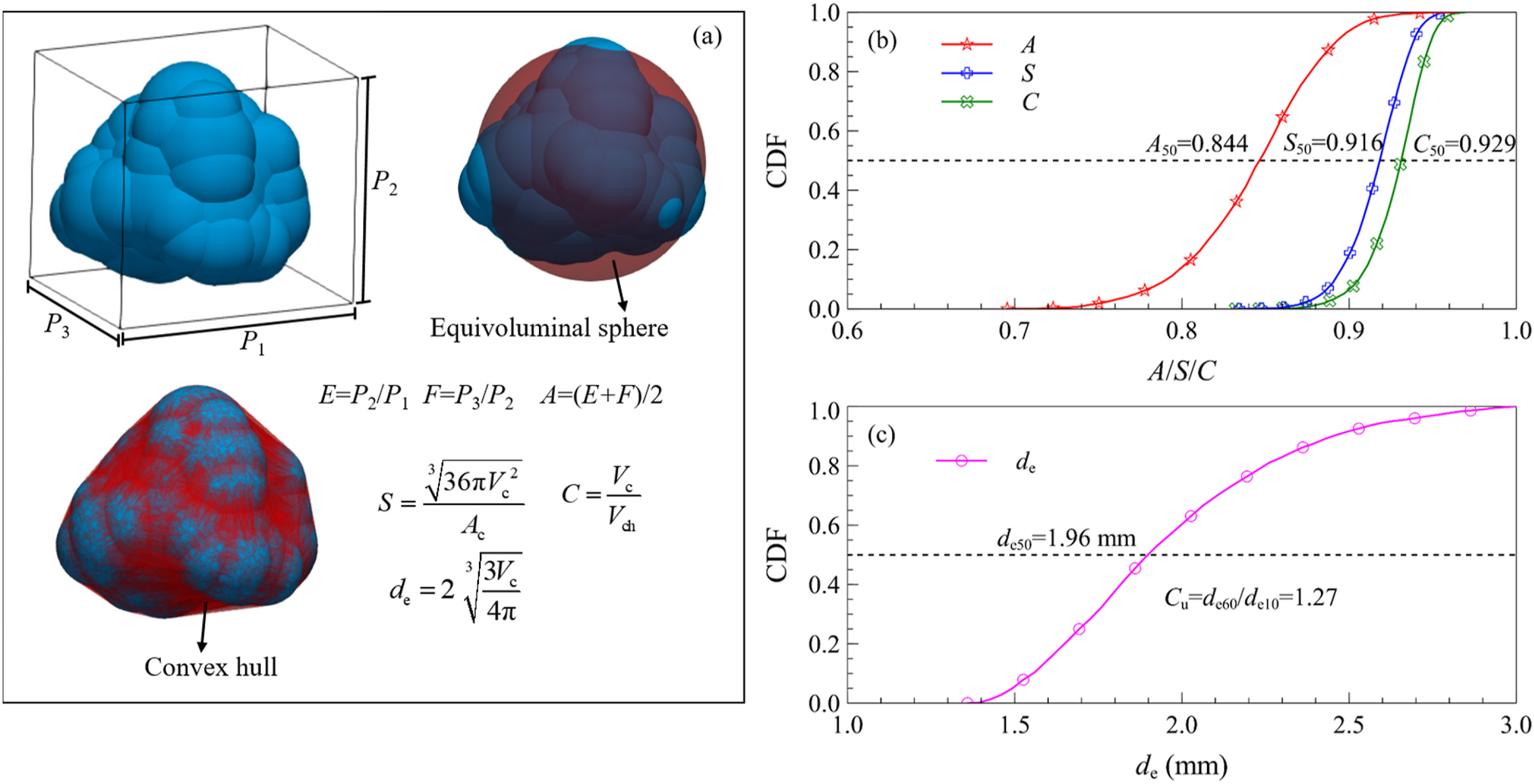JRMGE / Vol 14 / Issue 3
Coupled effects of particle overall regularity and sliding friction on the shear behavior of uniformly graded dense sands
Jiayan Nie, Shiwei Zhao, Yifei Cui, Yu Wang
Show More
a State Key Laboratory of Hydroscience and Engineering, Tsinghua University, Beijing, 100084, China
b South China Institute of Geotechnical Engineering, South China University of Technology, Guangzhou, 510640, China
c Key Laboratory of Mountain Hazards and Surface Process, Institute of Mountain Hazards and Environment, Chinese Academy of Sciences, Chengdu, 610041, China
d University of Chinese Academy of Sciences, Beijing, 100049, China
2022, 14(3): 873-885. doi:10.1016/j.jrmge.2021.10.014
Received: 2021-06-18 / Revised: 2021-08-18 / Accepted: 2021-10-18 / Available online: 2021-12-31
2022, 14(3): 873-885.
doi:10.1016/j.jrmge.2021.10.014
Received: 2021-06-18
Revised: 2021-08-18
Accepted: 2021-10-18
Available online: 2021-12-31
Particle morphology has been regarded as an important factor affecting shear behaviors of sands, and covers three important aspects, i.e. global form (overall shape), local roundness (large-scale smoothness), and surface texture (roughness) in terms of different observation scales. Shape features of different aspects can be independent of each other but might have coupled effects on the bulk behavior of sands, which has been not explored thoroughly yet. This paper presents a systematic investigation of the coupled effects of the particle overall regularity (OR) and sliding friction on the shear behavior of dense sands using three-dimensional (3D) discrete element method (DEM). The representative volume elements consisting of ideal spheres and irregular clumps of different mass proportions are prepared to conduct drained triaxial compression simulations. A well-defined shape descriptor named OR is adopted to quantify particle shape differences of numerical samples at both form and roundness aspects, and the particle sliding friction coefficient varies from 0.001 to 1 to consider the surface roughness effect equivalently in DEM. The stress-strain relationships as well as peak and critical friction angles of these assemblies are examined systematically. Moreover, contact network and anisotropic fabric characteristics within different granular assemblies are analyzed to explore the microscopic origins of the multi-scale shape-dependent shear strength. This study helps to improve the current understanding with respect to the influence of the particle shape on the shear behavior of sands from different shape aspects.
Keywords: Discrete element method (DEM), Overall regularity (OR), Particle sliding friction, Peak and critical friction angles, Fabric anisotropy, Dense sands
Article Data
Author(s) Information
Jiayan Nie

Dr. Jiayan Nie is currently a postdoctoral research fellow in the Department of Hydraulic Engineering at Tsinghua University, China. He earned his BS and PhD degrees of Water Resources and Hydropower Engineering and Hydraulic Structure Engineering from Shandong University and Wuhan University, respectively. During his PhD study, he visited the Computational Granular Mechanics Laboratory in the Department of Civil and Environmental Engineering at Hong Kong University of Science and Technology for one year. Dr. Nie has a strong research interest in the quasi-static and rheological behaviors of granular geomaterials by means of the theoretical model, physical test, discrete element method and hierarchical multiscale model. He has been participated in the National Key R&D Program of China and National Natural Science Foundation of China and published several papers in the relevant fields.

